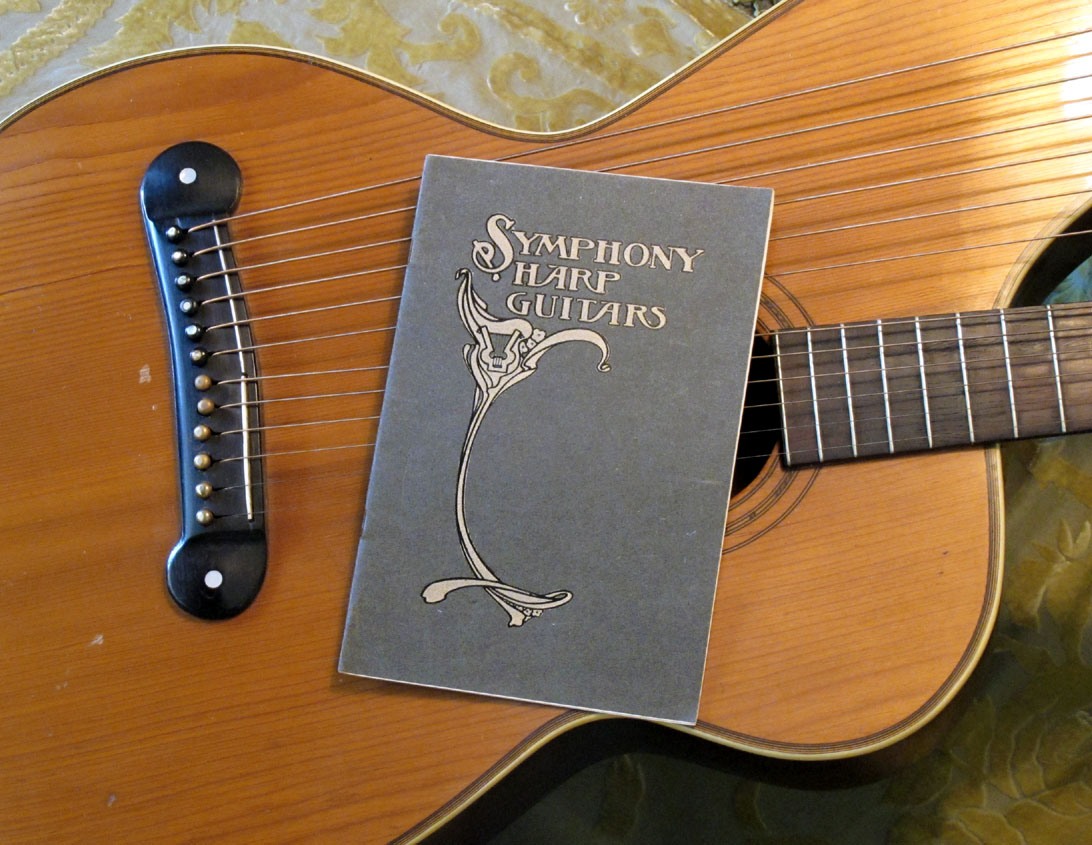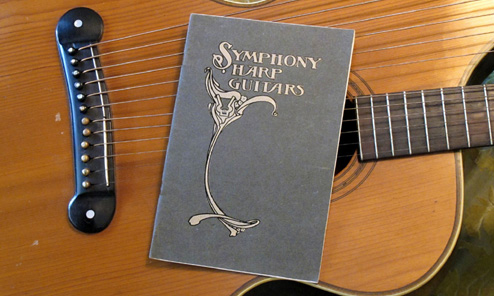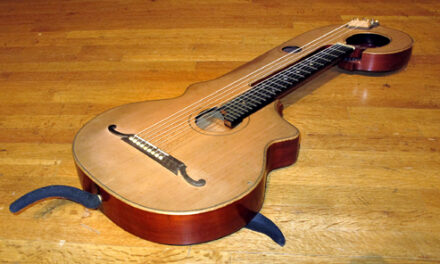
For Bob Hartman (who’s been waiting thirty-five years for this moment) and me, this is a bit of “Holy Grail ephemera.” I expect the hundred-plus Dyer owners will appreciate it as well, along with the general vintage guitar world. I just published a full public article on it here, while the catalog itself is archived exclusively in the Members Section of Harpguitars.net − as it is you Foundation donors who made it possible to procure this ultra-rare and important document (so pat yourselves on the back!).
There was, of course, more than one harp guitar brochure/catalog that the W. J. Dyer & Bro. (known more simply as “Dyer”) company produced during their not-quite-two decades of busy production. Somewhere between three and six unique catalogs featuring just the Dyer harp guitars (and later, harp mandolin family) were printed, in addition to the Dyer company’s occasional full line catalogs (which probably also included the harp guitars – after all, their 1939 version still did!).
So which one was first to finally turn up? A pretty early one, it seems. Alas, I was hoping to see my Style 8 in there, with maybe even an actual date…but no, this document evidently predates my instrument.
Well then, if early, it’s gotta be pretty enlightening, right?…after all, this was the “dark ages” of the Dyer harp guitar’s history. Well, apparently not quite early enough for that. Bottom line: we’ve got to find the rest of those catalogs!
Meanwhile, this one contains plenty of interesting information, and is above all a very cool bit of bound paper…check it out!






Just checked some facts about 1906. Average wage 22 cents an hour, workers wages 200 to 400 dollars a year.
So thes guitars were it seems quite affordable. But you had to learn to play it quick , as the average life span was 47 years…
I’ve always been a fan of silk and steels on harp guitars, they sound so rich and sweet as people do say in the testimonials. Explains why the top buckle when strung up with steel string sets over the years.
I couldn’t find anything more on H.I. Rubee, but will keep hunting….
Best wishes. Sean.
P.S. a three minute phone call from Denver to New York cost 11 dollars… about half the price of a style 4!
That is seriously cool. Glad you were able to get your hands on it and share it with the rest of us.
wow, GREAT blog and very interesting, thats cool to know about the silk and steel, I had no idea!
Michael – regarding prices, I should add a note in the article to the effect that Gibson’s 6-bass Style R (their least expensive) was at the time FOUR times as expensive as Dyer’s Style 7. That sure ain’t the case today!
very awesome!!!!
Thanks for always being “on the hunt”. I found the pricing of the guitars and accessories amusing.
Michael
A great big thank you to the catalog finder for allowing the HGF to acquire the catalog, and to Gregg, for presenting this important document to his readership. As you say, it does leave room for other catalogs to fill in the blanks for the progression of the Dyer line of goodies.
As in the past, instrument finds often come in twos, so hopefully another catalog is just around the corner so to speak!
I will keep searching.
Bob
Thanks, Sean – obviously I agree. Good eyes (and at low res, yet!) – alas, a quick search of Rublee yielded a couple of “guitar lessons” ads, but no released recordings.
Fantastic find!
Well worth the 10 dollar membership just to see this.
Now you have to find the phonograph recordings of H.I. Rublee!
Thanks, and keep on hunting, finding and sharing this stuff.
Sean